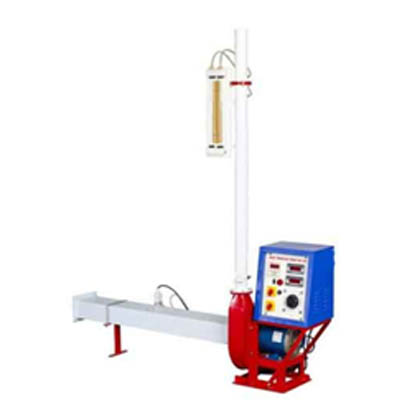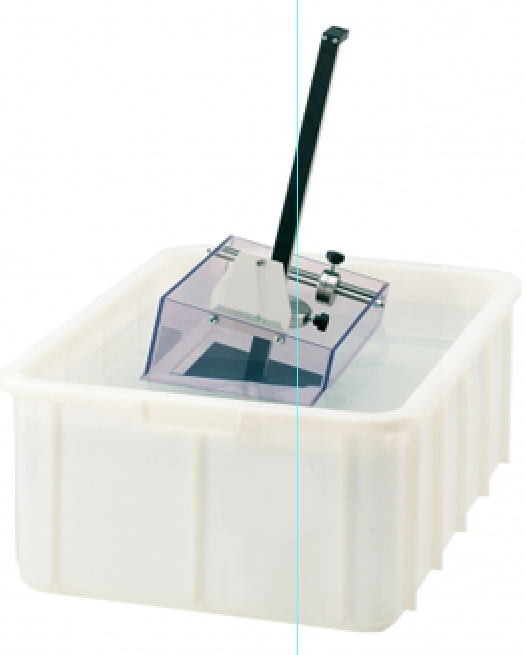Automotive Engine Test Bed
Categories: Fluid MechanicsThe unit allows to carry out a vast selection of tests on automotive engines, with a power output of up to 80kW. The system includes a dynamometer with a control and instrumentation panel. On the test...
Product
Description
The unit allows to carry out a vast selection of tests on automotive engines, with a power output of up to 80kW. The system includes a dynamometer with a control and instrumentation panel. On the test bed, a Diesel engine is mounted.
The system is supplied with manual, which describe all parts of the trainer, the installation and utilization procedures, as well as many exercises with the relative results.
TRAINING PROGRAM
• Classification of type of engine, operating principles and thermodynamic cycle
• Geometric, cinematic and dynamic relationships for ordinary crank mechanisms
• Definition of the main parameters: torque and power delivered, specific fuel consumption, efficiency, air/fuel ratio
• Operating principles of the injection and ignition system
• Engine starting procedures and relative safety standards
• Use of the dynamometer to determine the output torque and engine power
• Determination of specific fuel consumption and engine efficiency
• Determination of volumetric efficiency and air/fuel ratio
• Determination of mechanical characteristic
• Determination of regulation characteristic
• Determination of the engine thermal balance through the measurement of quantity of heat absorbed by the coolant
TECHNICAL SPECIFICATIONS
The test bed is mounted on a wheeled frame and includes:
• Hydraulic dynamometric unit
• Control and instrumentation panel with instruments for the measurement of fuel and air flow-rate
• Automotive engine to be tested
Hydraulic Dynamometric Unit
This unit allows to brake engines of up to 80 kW. The dynamometer requires a constant flow of water characterized by:
• flow-rate of between 20.5-24.5 l/kWh with a minimum of 2 bar
• input temperature between 20 and 25 °C
• output temperature not higher than 60 °C
Control Panel
The control and instrumentation panel includes:
• Battery
• Ignition key
• Acceleration lever
• Electric power and battery loading warning light
• Injection system warning light
• Diesel engine glow plug warning light
• Load adjustment knob
• Fuel tank, 16 l (approx.)
Automotive engine
By means of the engine electronic control unit (ECU), it is possible to measure the following quantities:
• Suction air temperature and pressure
• Engine revolution speed
• Air flow rate
• Fuel flow rate
• Engine cooling water inlet and outlet temperature (measured by Pt100)
• Engine cooling water flow rate (measured by electronic turbine meter)
• Output torque (measured by load cell)
Engine main features:
Cycle : Turbo Diesel
No. of strokes: 4
Fuel feed system: Direct injection
Cooling : Water
Displacement [cm³] : 1248
Max power [KW]: 51
Engine speed [rpm] : 4000
Max Torque [Nm] : 145
Rev. max T. [rpm]: 1500
Compression ratio: 18:0:1
The engine is supplied with the following components:
• Starter motor
• Alternator
• Injection apparatus (Diesel engines)
• Flywheel
• Exhaust silencer
• Cooling system
• Power supply: 230 Vac 50 Hz single-phase - 1 kVA (Other voltage and frequency on request)
quick overview :
The unit allows to carry out a vast selection of tests on automotive engines, with a power output of up to 80kW. The system includes a dynamometer with a control and instrumentation panel. On the test bed, a Diesel engine is mounted.
The system is supplied with manual, which describe all parts of the trainer, the installation and utilization procedures, as well as many exercises with the relative results.
TRAINING PROGRAM
• Classification of type of engine, operating principles and thermodynamic cycle
• Geometric, cinematic and dynamic relationships for ordinary crank mechanisms
• Definition of the main parameters: torque and power delivered, specific fuel consumption, efficiency, air/fuel ratio
• Operating principles of the injection and ignition system
• Engine starting procedures and relative safety standards
• Use of the dynamometer to determine the output torque and engine power
• Determination of specific fuel consumption and engine efficiency
• Determination of volumetric efficiency and air/fuel ratio
• Determination of mechanical characteristic
• Determination of regulation characteristic
• Determination of the engine thermal balance through the measurement of quantity of heat absorbed by the coolant
TECHNICAL SPECIFICATIONS
The test bed is mounted on a wheeled frame and includes:
• Hydraulic dynamometric unit
• Control and instrumentation panel with instruments for the measurement of fuel and air flow-rate
• Automotive engine to be tested
Hydraulic Dynamometric Unit
This unit allows to brake engines of up to 80 kW. The dynamometer requires a constant flow of water characterized by:
• flow-rate of between 20.5-24.5 l/kWh with a minimum of 2 bar
• input temperature between 20 and 25 °C
• output temperature not higher than 60 °C
Control Panel
The control and instrumentation panel includes:
• Battery
• Ignition key
• Acceleration lever
• Electric power and battery loading warning light
• Injection system warning light
• Diesel engine glow plug warning light
• Load adjustment knob
• Fuel tank, 16 l (approx.)
Automotive engine
By means of the engine electronic control unit (ECU), it is possible to measure the following quantities:
• Suction air temperature and pressure
• Engine revolution speed
• Air flow rate
• Fuel flow rate
• Engine cooling water inlet and outlet temperature (measured by Pt100)
• Engine cooling water flow rate (measured by electronic turbine meter)
• Output torque (measured by load cell)
Engine main features:
Cycle : Turbo Diesel
No. of strokes: 4
Fuel feed system: Direct injection
Cooling : Water
Displacement [cm³] : 1248
Max power [KW]: 51
Engine speed [rpm] : 4000
Max Torque [Nm] : 145
Rev. max T. [rpm]: 1500
Compression ratio: 18:0:1
The engine is supplied with the following components:
• Starter motor
• Alternator
• Injection apparatus (Diesel engines)
• Flywheel
• Exhaust silencer
• Cooling system
• Power supply: 230 Vac 50 Hz single-phase - 1 kVA (Other voltage and frequency on request)
Product
Reviews
add Review
reviews
No Review Yet.
Copyrights © 2025 All Rights Reserved by Atico












Product
Reviews
add Review
reviews
No Review Yet.